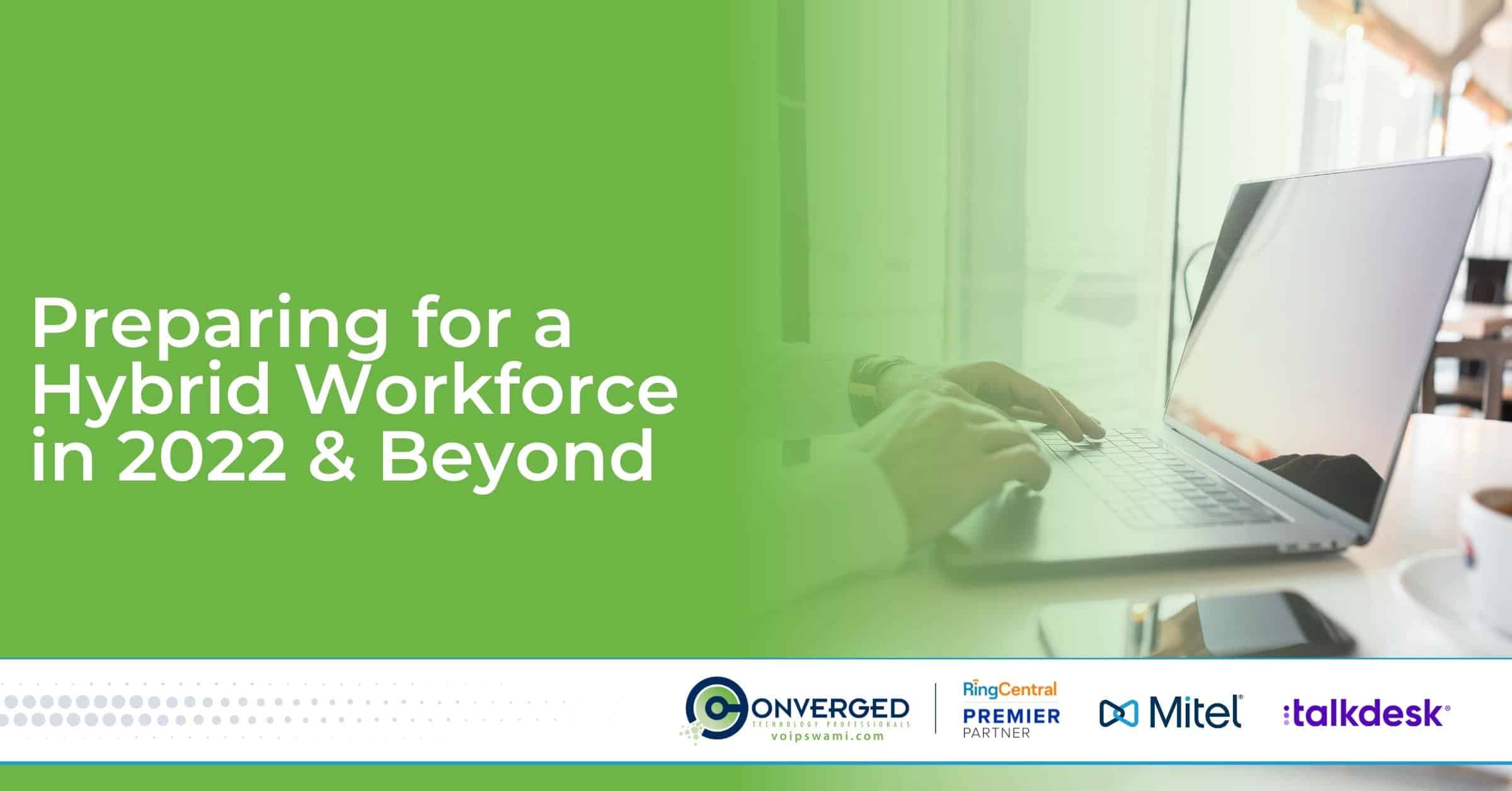
The workplace has radically changed over the past few years. Since the start of the pandemic, many companies have accelerated their digital transformations and adopted more technology to support daily operations. Additionally, many teams have moved to remote work to stay safe while remaining productive.
As companies begin to consider the future of their workplaces in 2022 and beyond, the idea of a hybrid model (part-remote, part-in-office), has become more appealing. In fact, 74% of U.S. companies are currently using or planning to implement a permanent hybrid work model, and 83% of U.S. employees say they prefer a hybrid workplace.
There are plenty of benefits to an organization that straddles the line between remote and in-office work. However, the permanent transition isn’t without its challenges, so it helps to have a plan to implement a hybrid office structure. Read on to learn the common challenges that hybrid companies face and the strategies to help you prepare for the future.
Key Challenges of the Hybrid Workplace
Choosing the Right Unified Communications Platform: The importance of a reliable unified communications platform has never been more crucial for company success. Offices that hope to transition to a permanent hybrid workplace must select a UCaaS solution that will serve their needs for the long term. The challenge comes in making a choice. Ideally, you want one all-encompassing UCaaS platform that supports all teams and opens collaboration between in-office and remote workers. No siloes, disparate platforms, or a complicated user experience.
Training Users on New Tech: Once you’ve chosen a comprehensive UCaaS solution to support your hybrid workforce, you need to make sure your in-office employees and your remote workers are fully trained to use the new technology. This can be tricky to accomplish quickly. Tech training will likely fall on your IT team, so it may be worthwhile to invest more in IT department spending. You won’t be alone in dedicating more resources to IT; companies’ average IT spending increased 6.7% from 2020 to 2021 as they continued to adjust to their employees working remotely or on hybrid models.
Determining New Costs: As you transition to the hybrid work model, you’ll want to reassess your budget to ensure you’re equipped to function at a hybrid level. That doesn’t necessarily mean you will be paying more as a hybrid company. In fact, hybrid models can save an average of $11,000 per worker per year.
However, with a hybrid model, there will be new costs like determining the necessary software, hardware, new hires, and other expenses necessary to keep a blended office functioning.
Keeping a Sense of Connection Alive: Perhaps the biggest challenge for a hybrid workforce is ensuring that your remote employees still feel a sense of connection and inclusion with your in-office workers. According to research, 53% of remote staff are worried about being left out of in-person team meetings and other in-office events and activities.
Companies should strive to provide a cohesive experience to make their remote employees feel valued and connected. Otherwise, remote workers will grow more dissatisfied with the work culture, and the employee turnover rate will likely increase. Further, it’s important not to create a hierarchy between your in-person employees and those that work from home.
Strategies for Creating a Successful Hybrid Workforce
Choose a UCaaS Solution That Promotes Seamless Collaboration: Workplace communication doesn’t stop at video meetings, and neither should your UCaaS solution. Your chosen platform should seamlessly connect your in-office and remote employees through phone, video, broadcasts, chat and messaging, and even real-time collaboration and bonding tools, like Microsoft Teams’ Together Mode.
Having all of these communication lines available within a single platform enhances the employee experience, removes collaborative friction, and eliminates communication gaps. It’s a way to improve the flow of conversation by giving everyone an easy way to speak up, participate, and connect.
Get Creative With In-Office Scheduling: Hybrid models can actually look different from company to company. Some businesses have permanent in-office and remote employees, while others may require their entire workforce to be in the office on certain days, and all work remotely on others.
Based on your business needs, you may be able to create a structure that gives your teams a healthy variety and appreciation for remote work. For example, you could institute a weekly or monthly work-from-home day for all employees, even the in-house teams. This gives everyone remote work flexibility on a regular basis, plus it emphasizes the importance of working, meeting, and bonding virtually. As you consider what the permanent hybrid structure would look like, take your employees’ feedback and suggestions into account to make sure you’re offering them something that works.
Remember to Consider Hardware: Make sure to set up your remote workforce for success, even after implementing UCaaS and other software. Do they need newer laptops? Audio equipment? Cameras? Consider the additional items that might be necessary to ensure your remote and in-office employees are firing on all cylinders.
Prioritize a Healthy Company Culture: When you operate in a hybrid workplace, creating a supportive and appealing company culture is one of the most critical factors to your success.
Your efforts to foster a thriving culture takes work, particularly from the leadership team.
Take steps that make the remote employees feel that they are a part of office life. Consider implementing a round-robin check-in every morning with teams, fun events like virtual happy hours, lunch-and-learns, and monthly company meetings to help everyone feel connected. Be open to feedback from your employees so you’ll have a good idea about what’s working and what isn’t.
These strategies will get you started in setting your organization up for success, no matter how distributed your teams become in the future. For more tips on workplace communications, UCaaS solutions, and the state of the modern office, enroll in our monthly newsletter.
Click here to get Converged Technology Professionals insights straight to your inbox.
If you enjoyed this article you may also enjoy:
